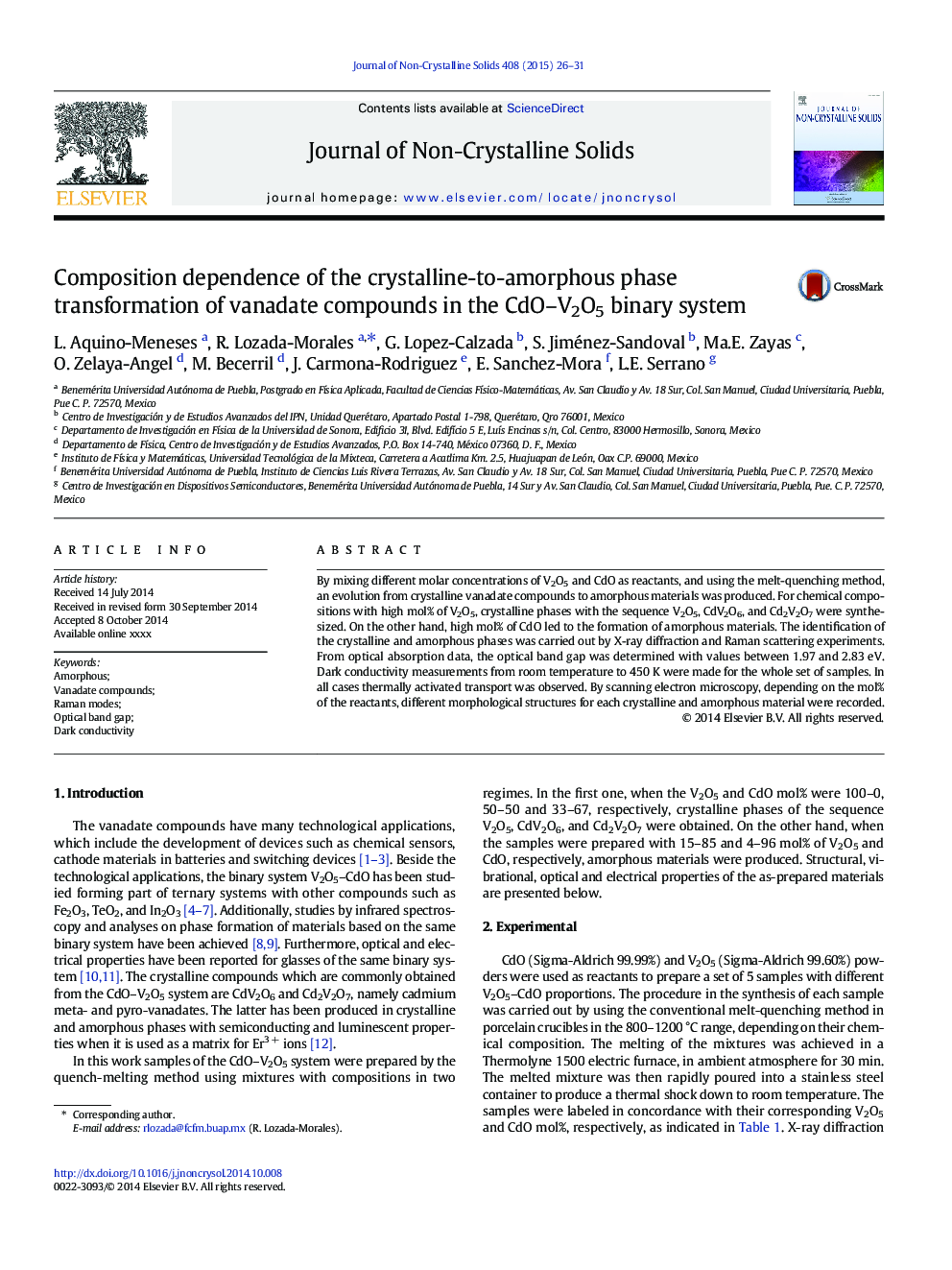| Article ID | Journal | Published Year | Pages | File Type |
|---|---|---|---|---|
| 7901241 | Journal of Non-Crystalline Solids | 2015 | 6 Pages |
Abstract
By mixing different molar concentrations of V2O5 and CdO as reactants, and using the melt-quenching method, an evolution from crystalline vanadate compounds to amorphous materials was produced. For chemical compositions with high mol% of V2O5, crystalline phases with the sequence V2O5, CdV2O6, and Cd2V2O7 were synthesized. On the other hand, high mol% of CdO led to the formation of amorphous materials. The identification of the crystalline and amorphous phases was carried out by X-ray diffraction and Raman scattering experiments. From optical absorption data, the optical band gap was determined with values between 1.97 and 2.83Â eV. Dark conductivity measurements from room temperature to 450Â K were made for the whole set of samples. In all cases thermally activated transport was observed. By scanning electron microscopy, depending on the mol% of the reactants, different morphological structures for each crystalline and amorphous material were recorded.
Related Topics
Physical Sciences and Engineering
Materials Science
Ceramics and Composites
Authors
L. Aquino-Meneses, R. Lozada-Morales, G. Lopez-Calzada, S. Jiménez-Sandoval, Ma.E. Zayas, O. Zelaya-Angel, M. Becerril, J. Carmona-Rodriguez, E. Sanchez-Mora, L.E. Serrano,
